Cold Forging Effect on the Microstructure of Motorbike Shock Absorbers Fabricated by Tube Forming in a Closed Die
Abstract
1. Introduction
2. Materials and Methods
3. Results
3.1. Simulated Deformation When Tube Forming in a Closed Die
3.2. Schemes Metal Fibers’ Structural Characterization in a Tube Forming Process
4. Conclusions
Supplementary Materials
Author Contributions
Funding
Acknowledgments
Conflicts of Interest
References
- Wang, Z.; Dong, S.; Li, F. FEM-Based Analysis on the Process of Tube Stamping. Adv. Mater. Res. 2013, 690–693, 2315–2321. [Google Scholar] [CrossRef]
- Tüzün, A. Analysis of Tube Upsetting. Master’s Thesis, Middle East Technical University, Dumlupınar Bulvarı No. 1, 06800 Çankaya/Ankara. 2004. Available online: https://etd.lib.metu.edu.tr/upload/12605660/index.pdf (accessed on 10 August 2020).
- Jamil, M.S.C.; Sheikh, M.A.; Li, L. A Finite Element Study of Buckling and Upsetting Mechanisms in Laser Forming of Plates and Tubes. Int. J. Manuf. Mater. Mech. Eng. 2011, 1, 1–17. [Google Scholar] [CrossRef]
- Poursina, M.; Parvizian, J. Simulation Of Folding Defect In Forging. AIP Conf. Proc. 2004, 712, 486–491. [Google Scholar] [CrossRef]
- Hoffman Machinery Corporation. Available online: http://www.hoffmanmachinery.com (accessed on 9 March 2020).
- Talebi Anaraki, A.; Loh-Mousavi, M.; Wang, L.-L. Experimental and numerical investigation of the influence of pulsating pressure on hot tube gas forming using oscillating heating. Int. J. Adv. Manuf. Technol. 2018, 97, 3839–3848. [Google Scholar] [CrossRef]
- Talebi-Anaraki, A.; Chougan, M.; Loh-Mousavi, M.; Maeno, T. Hot Gas Forming of Aluminum Alloy Tubes Using Flame Heating. J. Manuf. Mater. Process. 2020, 4, 56. [Google Scholar]
- Reddy, P.; Reddy, G.; Prasad, P. A Review on Finite Element Simulations in Metal Forming. Int. J. Mod. Eng. Res. 2012, 2, 2326–2330. [Google Scholar]
- Wang, Z.; Lu, J.; Wang, Z.R. Numerical and experimental research of the cold upsetting–extruding of tube flanges. J. Mater. Process. Technol. 2001, 110, 28–35. [Google Scholar] [CrossRef]
- Su, Y.L.; Yang, W.Z.; Wang, C.P. Upsetting Process Analysis and Numerical Simulation of Metal Pipe’s End. Appl. Mech. Mater. 2013, 364, 488–492. [Google Scholar] [CrossRef]
- Gao, P.F.; Fei, M.Y.; Yan, X.G.; Wang, S.B.; Li, Y.K.; Xing, L.; Wei, K.; Zhan, M.; Zhou, Z.T.; Keyim, Z. Prediction of the folding defect in die forging: A versatile approach for three typical types of folding defects. J. Manuf. Process. 2019, 39, 181–191. [Google Scholar] [CrossRef]
- Gao, P.; Yan, X.; Fei, M.; Zhan, M.; Li, Y. Formation mechanisms and rules of typical types of folding defects during die forging. Int. J. Adv. Manuf. Technol. 2019, 104, 1603–1612. [Google Scholar] [CrossRef]
- Gronostajski, Z.; Pater, Z.; Madej, Ł.; Surdacki, P.; Lisiecki, L.; Lukaszek-Solek, A.; Łuksza, J.; Mróz, S.; Muskalski, Z.; Muzykiewicz, W.; et al. Recent development trends in metal forming. Arch. Civ. Mech. Eng. 2019, 19, 898–941. [Google Scholar] [CrossRef]
- Dixit, U.S. 1—Modeling of metal forming: A review. In Mechanics of Materials in Modern Manufacturing Methods and Processing Techniques; Silberschmidt, V.V., Ed.; Elsevier: Amsterdam, Netherlands, 2020; pp. 1–30. [Google Scholar] [CrossRef]
- Strano, M. A Simplified Methodology for Estimating the Variance of Material Properties, in FE Analysis under Uncertainty of Sheet and Tube Metal Forming Processes. AIP Conf. Proc. 2007, 908, 499–504. [Google Scholar] [CrossRef]
- Tisza, M. Metal Forming in the Automotive Industry; University of Miskolc: Miskolc, Hungary, 2020. [Google Scholar]
- La, W.; Lee, H.; Choi, S.; Lim, S.J.; Woo, C.S.; Lee, G.A. Analysis of Cylindrical Tube Forming Process Using Polyurethane. Trans. Mater. Process. 2006, 15, 354–359. [Google Scholar] [CrossRef][Green Version]
- Kim, K.T.; Lee, G.A.; Choi, S.; Lee, H.; Lee, Y.S. Prediction of Shape Accuracy in Elastomer-Forming of a Cylindrical Tube by a Response Surface Method. Trans. Mater. Process. 2008, 17, 218–224. [Google Scholar] [CrossRef]
- Alavizadeh, S.M.; Karami, J. Experimental and numerical investigation on metal tubes forming with a novel reconfigurable hydroforming die based on multi-point forming. Prod. Eng. 2019, 13. [Google Scholar] [CrossRef]
- Ghadami, S.; Dariani, B.M. Analytical and numerical modeling of high-strain rate metal-tube forming. Int. J. Adv. Manuf. Technol. 2019, 103, 4147–4160. [Google Scholar] [CrossRef]
- Liu, Y.; Qiu, X. A theoretical model of the shrinking metal tubes. Int. J. Mech. Sci. 2018, 144, 564–575. [Google Scholar] [CrossRef]
- ASM Handbook, Metalworking: Bulk Forming; ASM International: Novelty, OH, USA, 2005; Volume 14A.
- Tang, H.; Hao, C.; Jiang, Y. Forming process and numerical simulation of making upset on oil drill pipe. Acta Metall. Sin. 2010, 23, 72–80. [Google Scholar] [CrossRef]
- Steel Grade STKM11A Chemical Information, Mechanical Properties. Available online: http://www.steel-grades.com/Steel-Grades/Structure-Steel/STKM11A.html (accessed on 9 March 2020).
- Yoshida, K.; Kuwabara, T. Effect of strain hardening behavior on forming limit stresses of steel tube subjected to nonproportional loading paths. Int. J. Plast. 2007, 23, 1260–1284. [Google Scholar] [CrossRef]
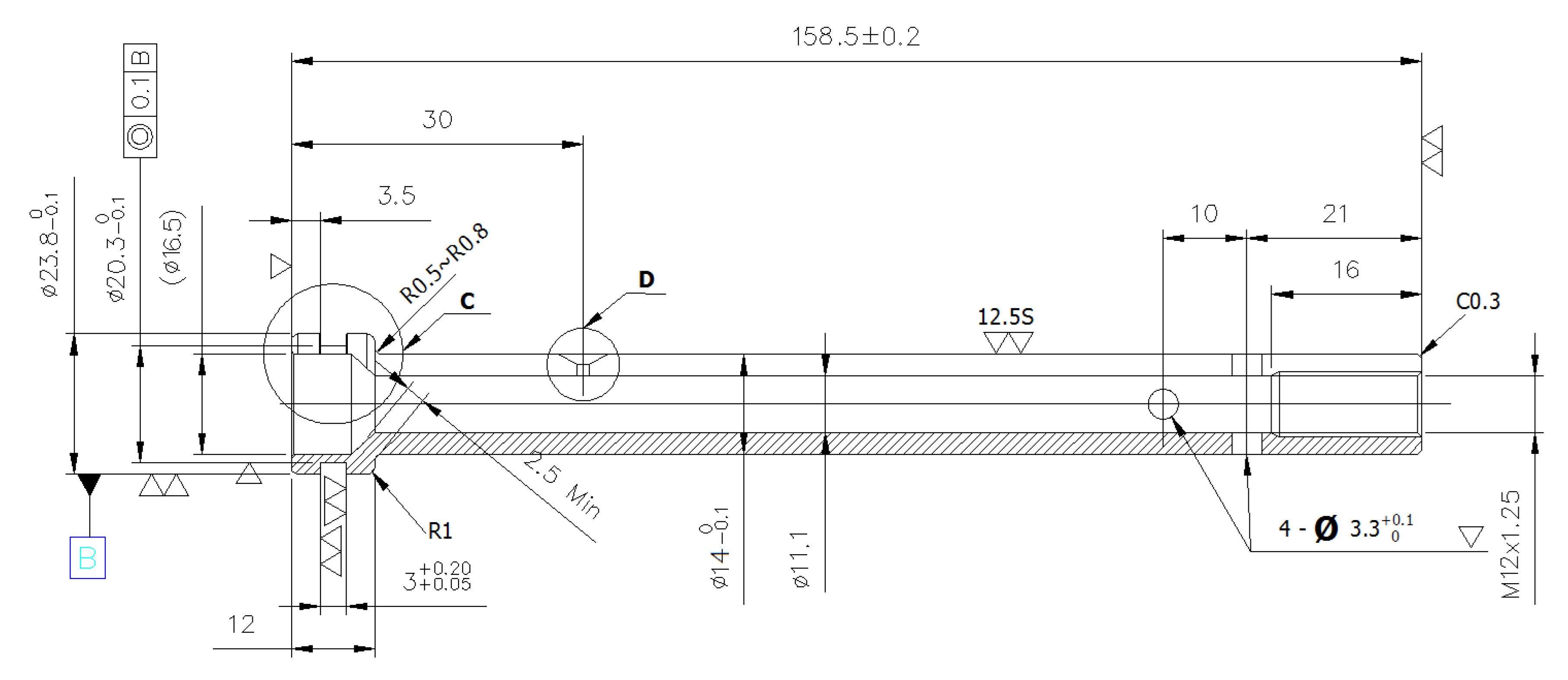
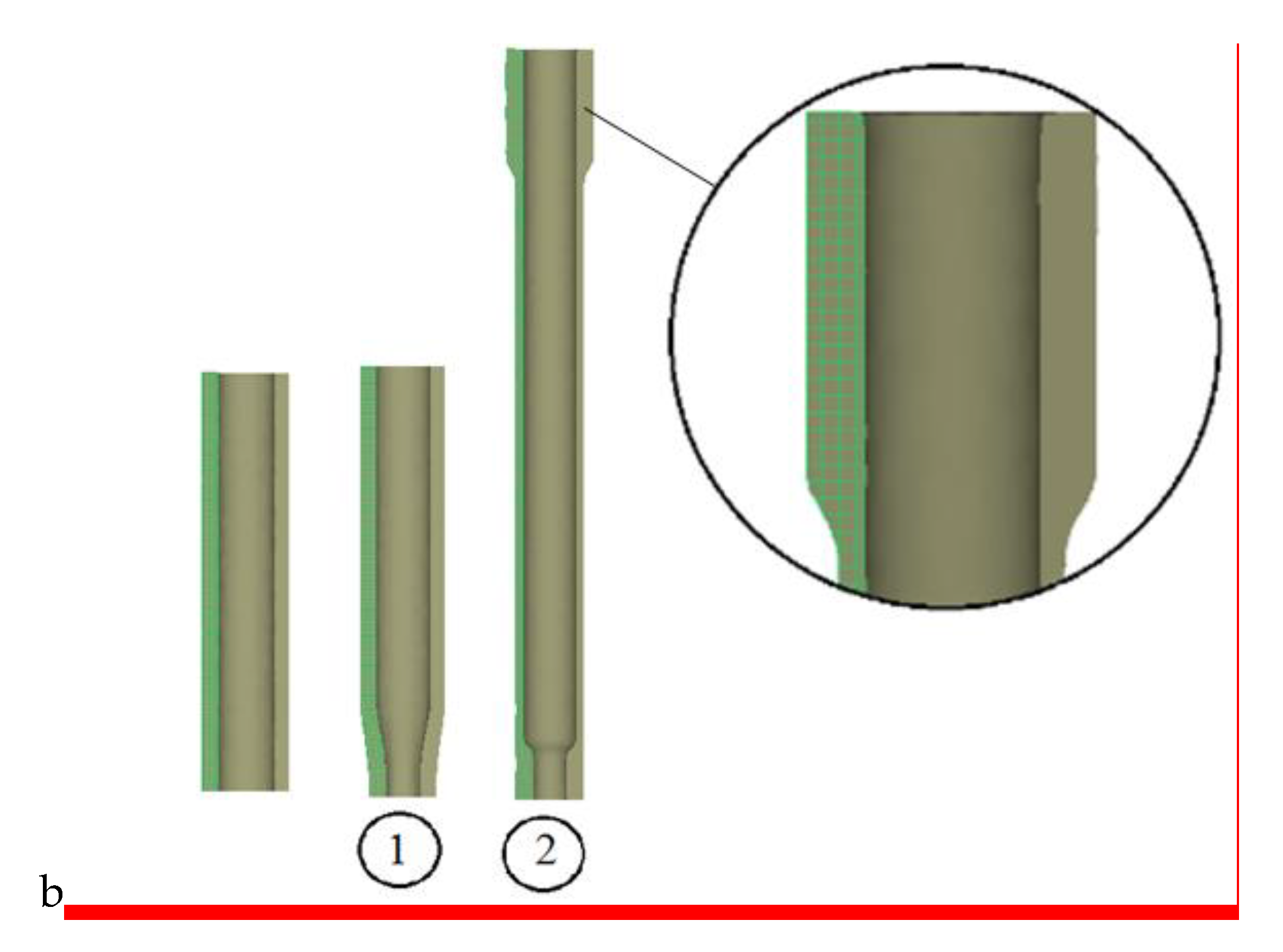

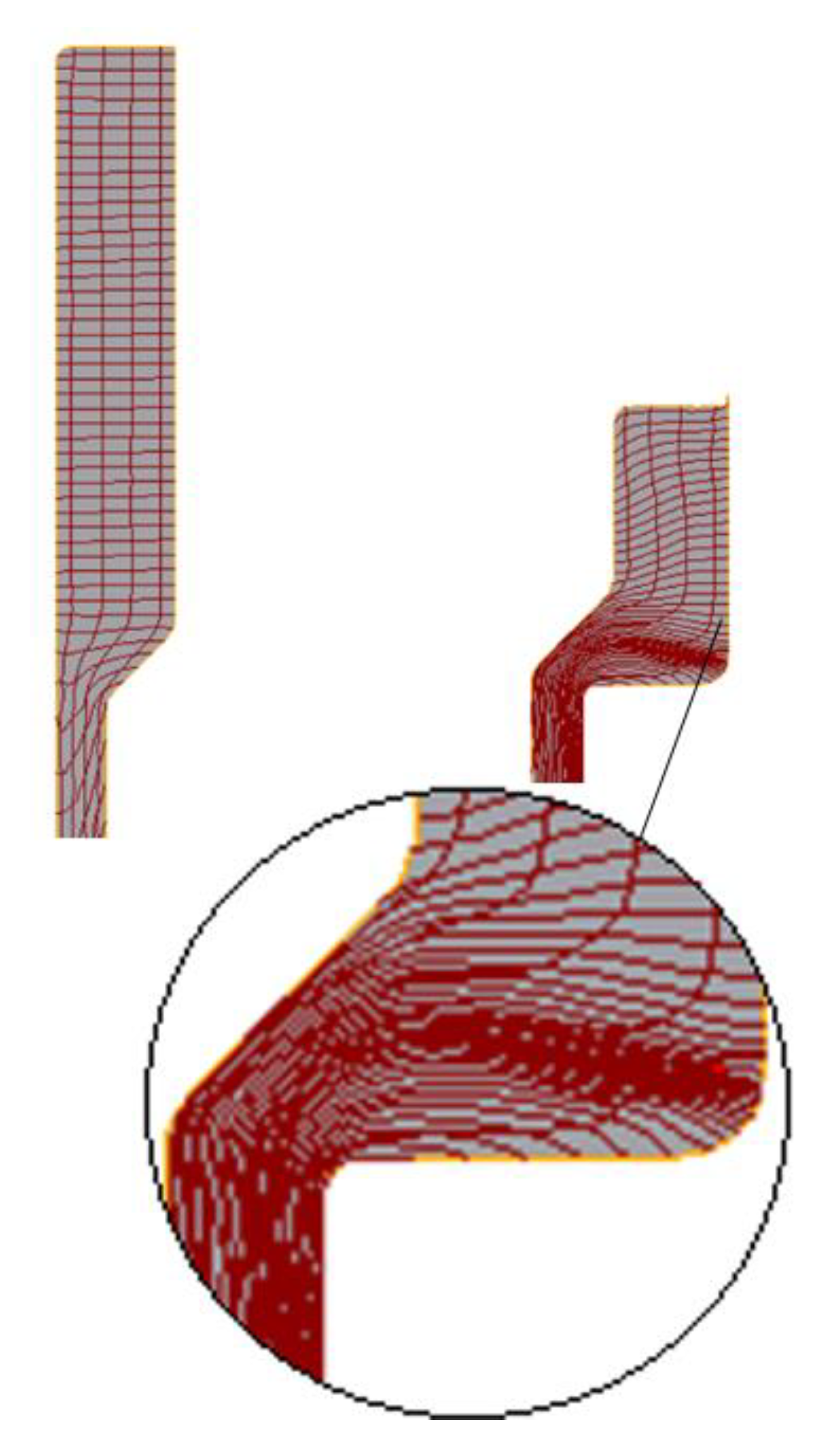
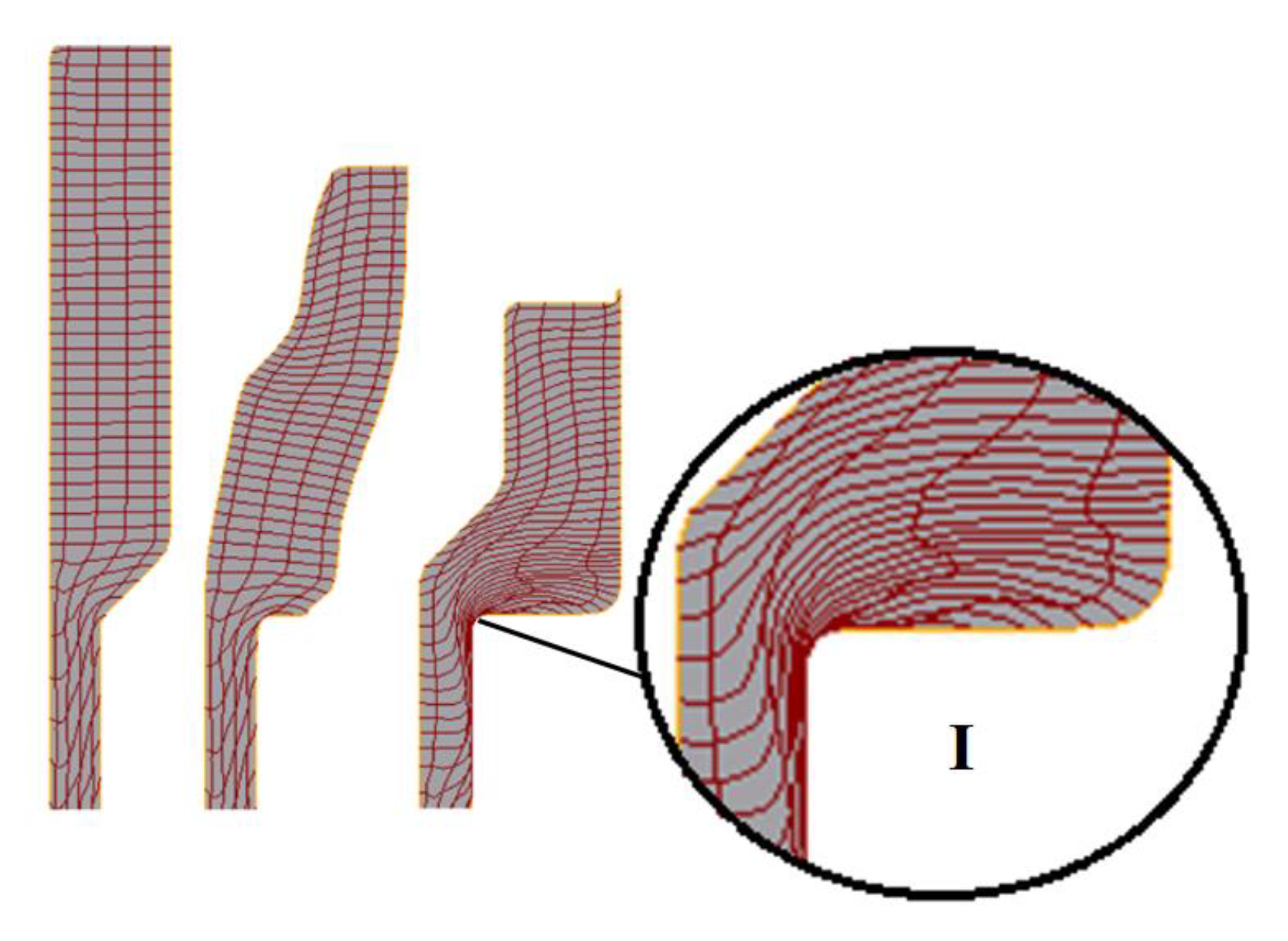
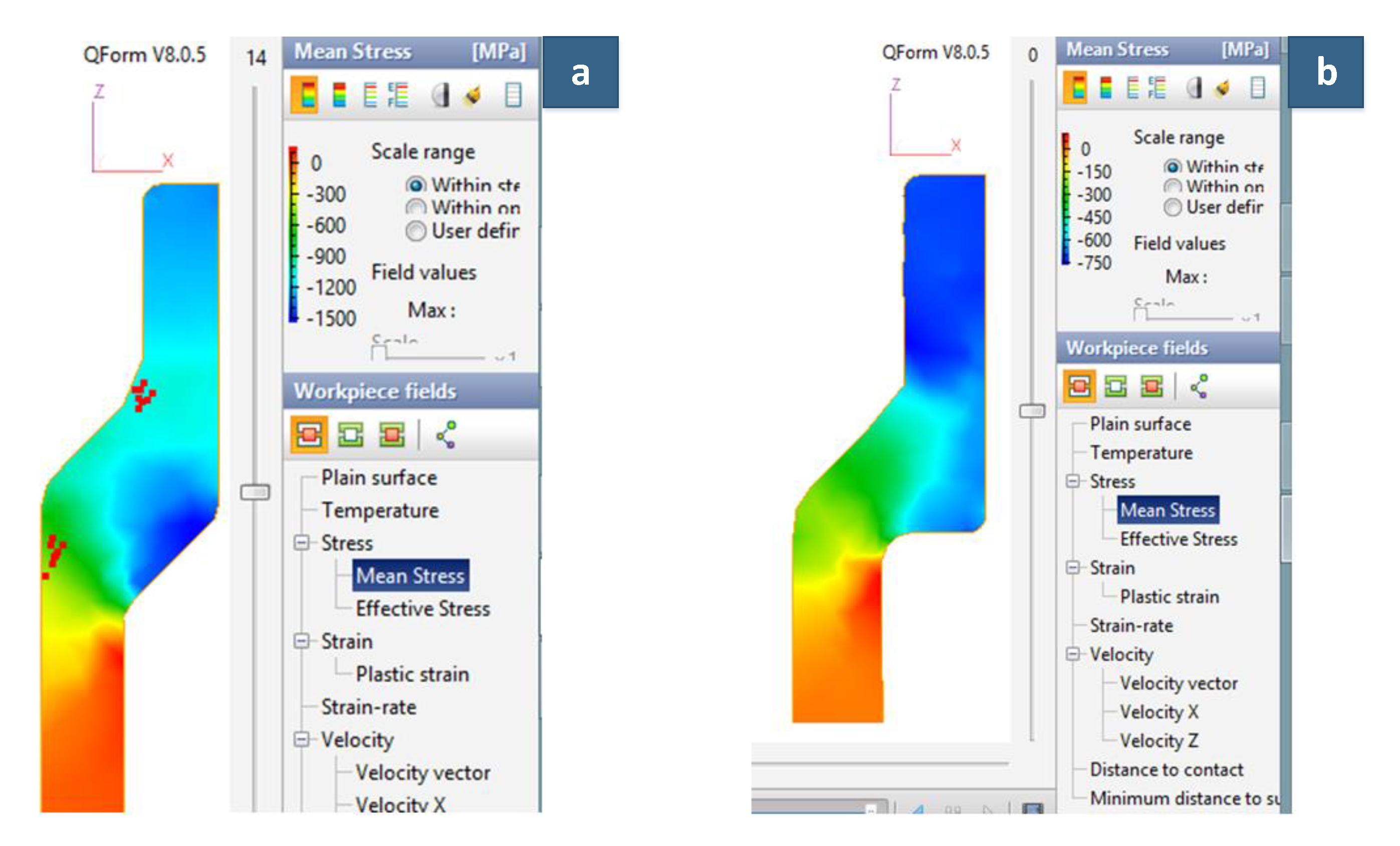
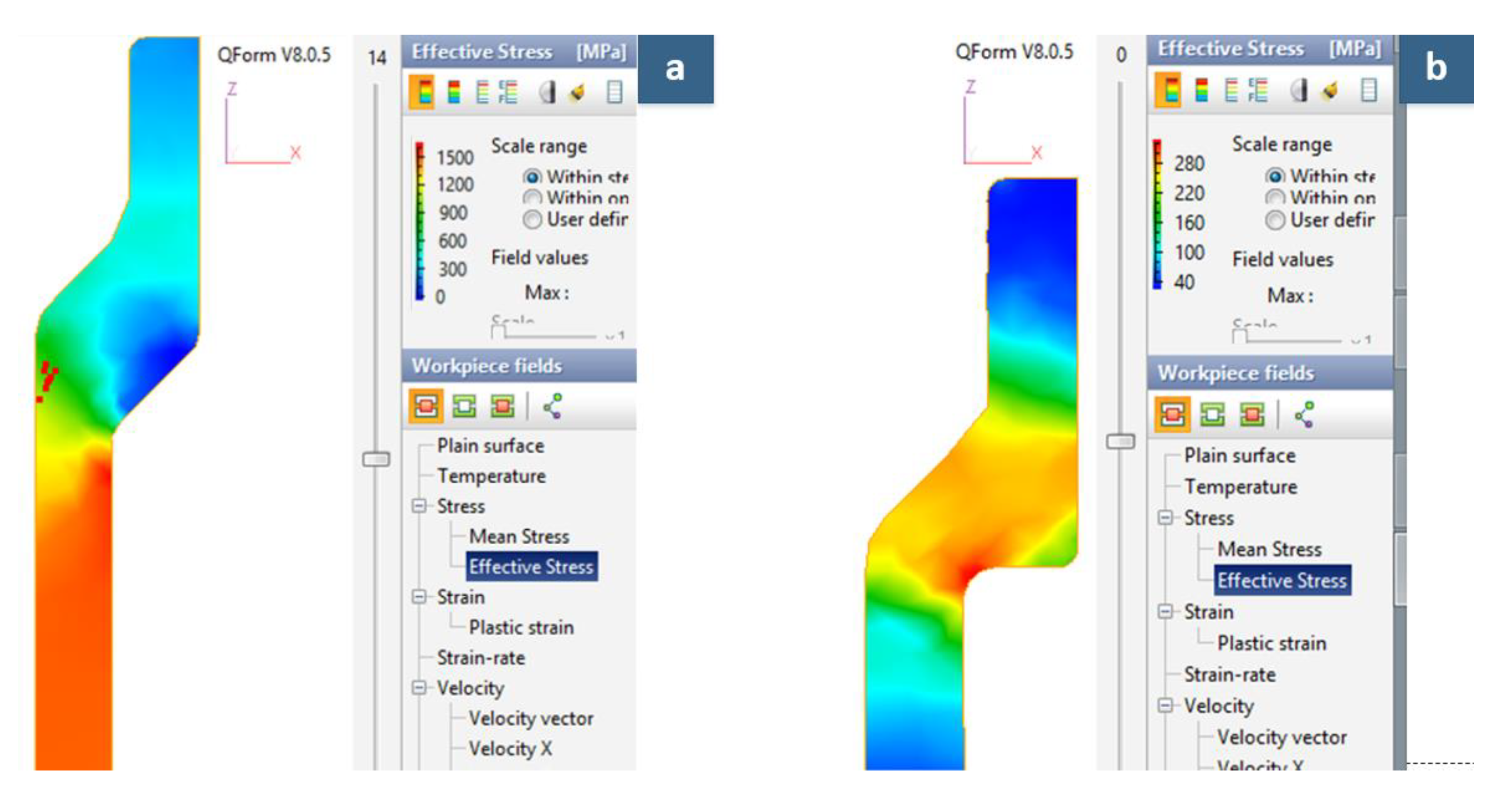


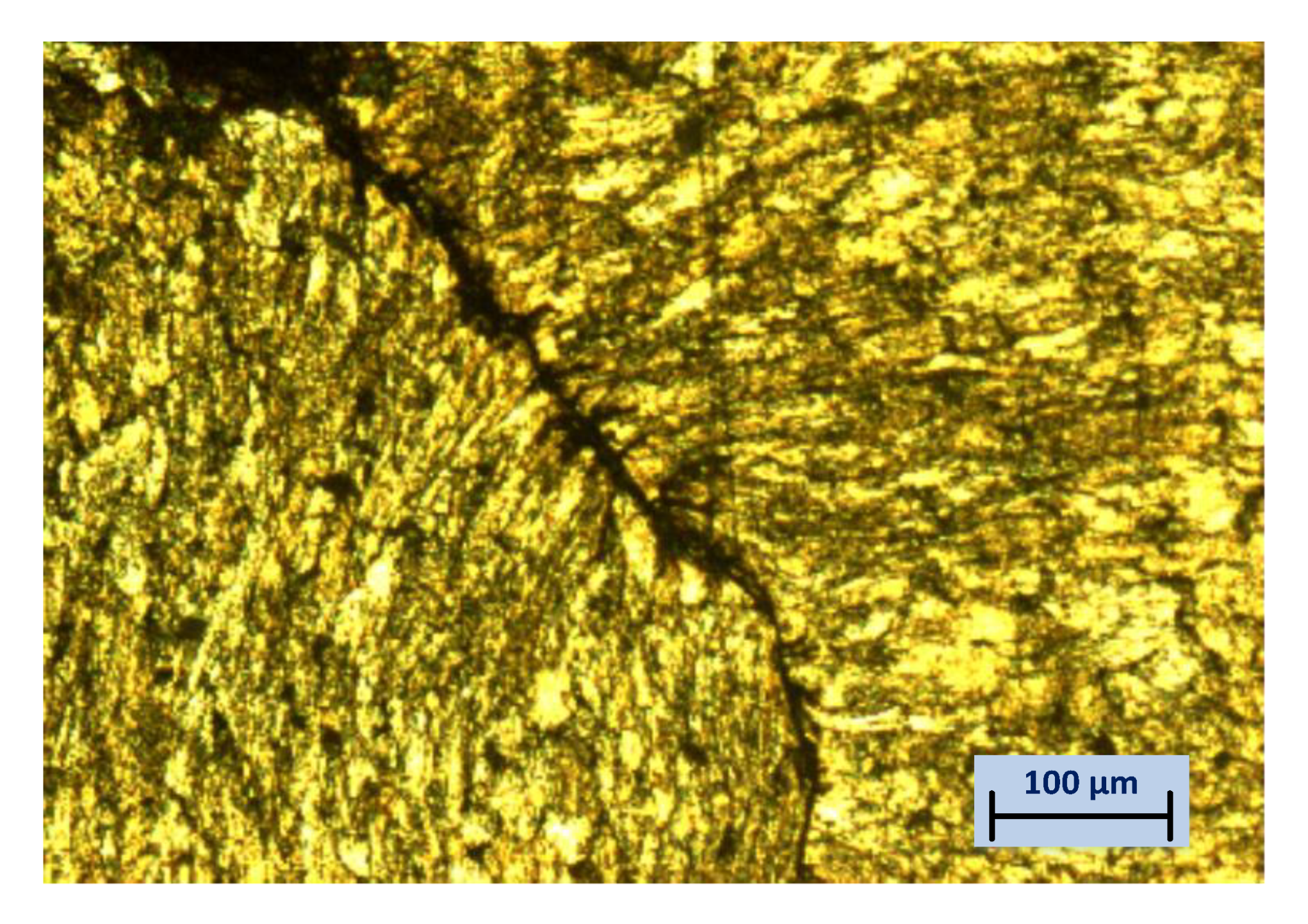
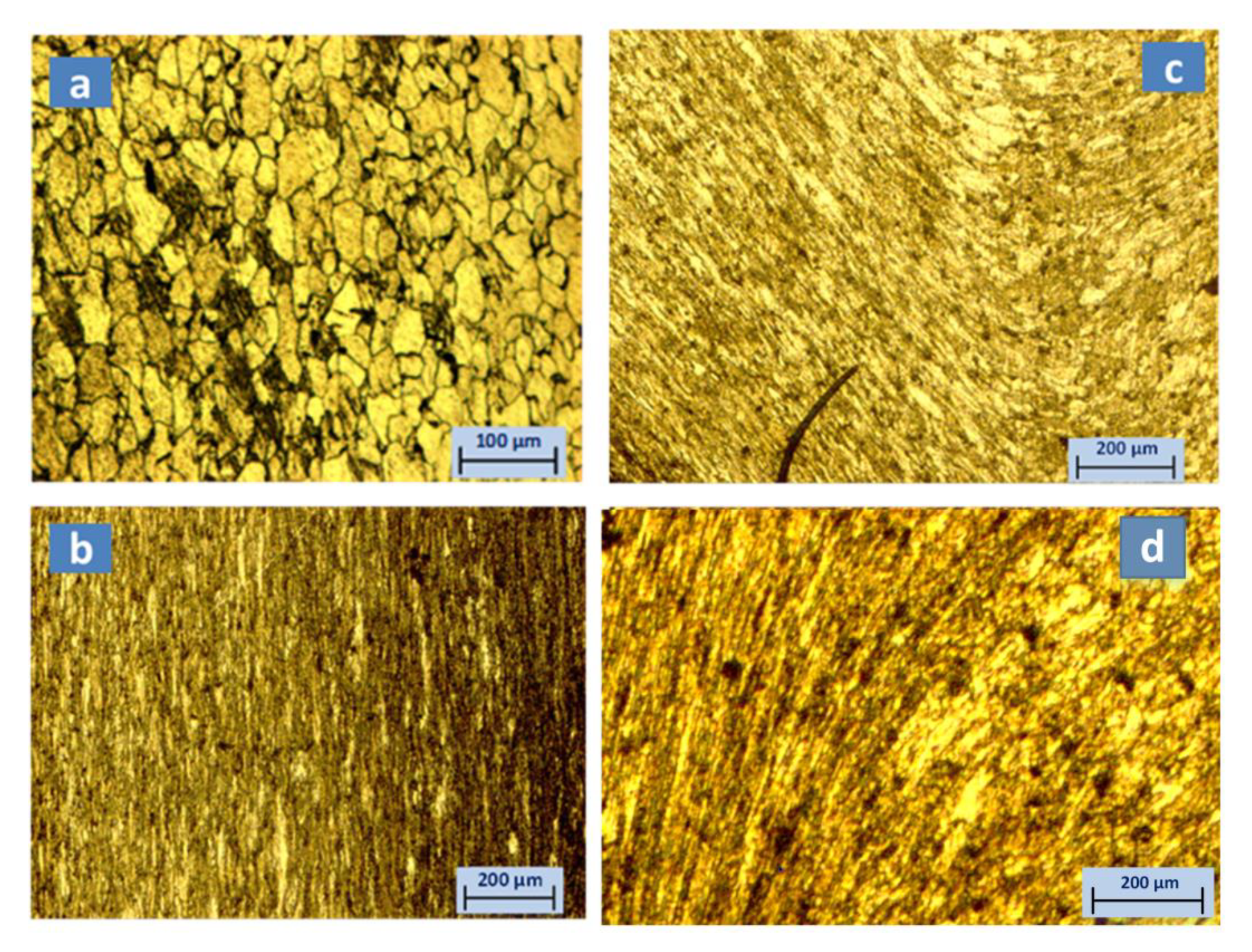
| Step | Thickness of Next Steps (mm) | Thickness of Previous Step (mm) | Ratio S1/S0 |
|---|---|---|---|
| 1 | 1.95 | 2.70 | 1.386 |
| 2 | 2.77 | 3.65 | 1.352 |
Publisher’s Note: MDPI stays neutral with regard to jurisdictional claims in published maps and institutional affiliations. |
© 2021 by the authors. Licensee MDPI, Basel, Switzerland. This article is an open access article distributed under the terms and conditions of the Creative Commons Attribution (CC BY) license (http://creativecommons.org/licenses/by/4.0/).
Share and Cite
Le, T.-K.; Bui, T.-A. Cold Forging Effect on the Microstructure of Motorbike Shock Absorbers Fabricated by Tube Forming in a Closed Die. Appl. Sci. 2021, 11, 2142. https://doi.org/10.3390/app11052142
Le T-K, Bui T-A. Cold Forging Effect on the Microstructure of Motorbike Shock Absorbers Fabricated by Tube Forming in a Closed Die. Applied Sciences. 2021; 11(5):2142. https://doi.org/10.3390/app11052142
Chicago/Turabian StyleLe, Trung-Kien, and Tuan-Anh Bui. 2021. "Cold Forging Effect on the Microstructure of Motorbike Shock Absorbers Fabricated by Tube Forming in a Closed Die" Applied Sciences 11, no. 5: 2142. https://doi.org/10.3390/app11052142
APA StyleLe, T.-K., & Bui, T.-A. (2021). Cold Forging Effect on the Microstructure of Motorbike Shock Absorbers Fabricated by Tube Forming in a Closed Die. Applied Sciences, 11(5), 2142. https://doi.org/10.3390/app11052142







